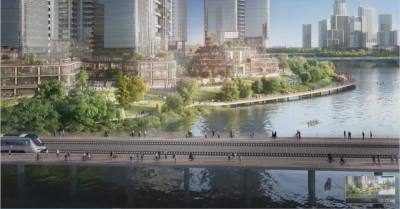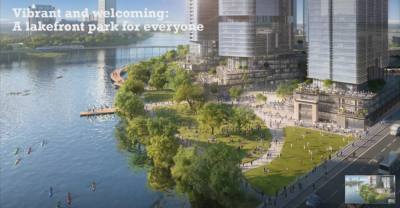The applicant, Richard Suttle, is proposing an 18.86-acre PUD located at 305 S. Congress Ave., Austin, on the corner of South Congress and Lady Bird Lake, near the Austin American-Statesman building. The PUD will add trails, lawn space, a pier and a boardwalk area close to the shoreline of Lady Bird Lake.
Staff from the Austin Watershed Protection Department did not recommend the approval of the original PUD, citing multiple environmental concerns. The Austin Environmental Commission approved an amended version of the PUD that meets multiple environmental requirements and addresses those concerns. The PUD now moves to the Austin Planning Commission.
A PUD is a type of zoning that alters code requirements in exchange for other construction opportunities. PUDs are required to preserve the natural environment, provide high-quality development and innovative design, and ensure adequate public facilities and services, Environmental Program Manager Atha Phillips said.
A debate sparked between Phillips and Suttle led to the amended version of the PUD. Phillips said the original proposed lawn areas of the PUD would add and remove certain vegetation, causing additional erosion.
“The proposed restoration seems like a great idea, and usually we would be 100% on board with that,” Phillips said. “Watershed protection staff would like the trail to be moved a minimum of 25 feet from the crest of the slope away from the shoreline and have the areas between the trail and the crest revegetated and protected with a split rail fence.”
Certain aspects of the PUD, such as a water filtration pond and a boardwalk area, would disrupt the immediate area, Phillips said. The proposed boardwalk area would remove seven trees and destabilize the shoreline due to the construction of a bulkhead, Phillips said. There are opportunities to save the trees by narrowing the boardwalk and moving it 50 feet to the west of the proposed area.
Another issue with the original PUD is that it blocks the only connection from South Congress Avenue to the hike and bike trail, Phillips said.
“The parks and recreation department is seeking a trail connection that is equitable and provides a space that all Austinites feel comfortable accessing and going to the hike and bike trail,” Phillips said.
However, if the trail is moved 25 feet from its proposed location like Phillips suggests, then the development will not be able to save as many trees, Suttle said.
“We’ve analyzed that we would end up doing down to 68% tree preservation because a bunch of trees get nuked,” Suttle said. “We’re protecting 100% of the heritage trees, and we’re saving 75% of the protected trees. The trail should stay where it is, and we should enhance where it is.”
The pier and the boardwalk should stay where it is as well, Suttle said. The PUD places the pier and the boardwalk where it is to consider bat conservation under the South Congress bridge.
“As Atha would have it, she would like our pier and our deck to be put next to the bridge,” Suttle said. “I will tell you that it wouldn't be a very pleasant experience when the bats are coming in and out or are hanging out in there because bats do what bats do under the bridge or near the bridge. The [bat conservationists] have told us to stay away from that bridge.”
Individuals can watch the full discussion of the PUD here.







